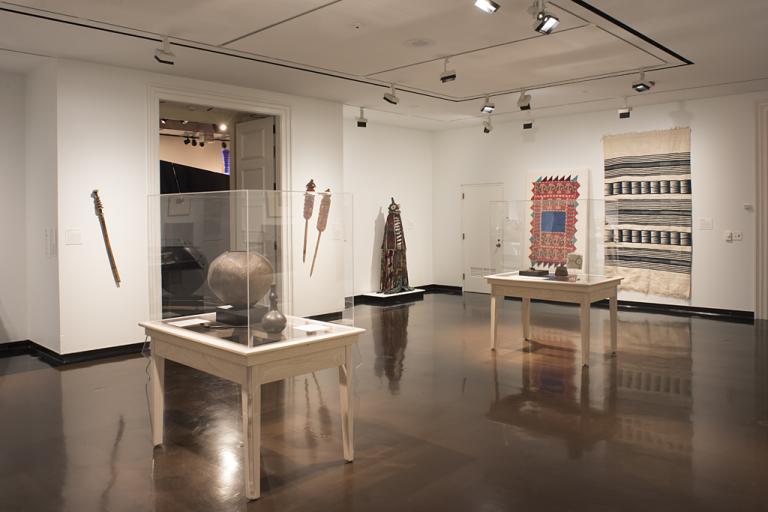Race, Gender, and the "Decorative" in 20th-Century African Art: Reimagining Boundaries
The Tuareg, the southernmost Amazigh (Berber) people, have historically been seminomadic pastoralists who live in the Saharan and Sahelian regions of Northwestern Africa (southern Algeria, western Libya, eastern Mali, northern Niger, and northeastern Burkina Faso). Today they are also settled agriculturists and city dwellers. The Tuareg achieved independence from French colonial rule in the 1950s and 1960s after two decades of resistance, using their mastery of the desert to support national independence movements. In addition, some groups fought for Tuareg independence from autonomous nation-states.
Well-established caravan routes throughout Northwest Africa facilitated the spread of Islam from the seventh century. Tuareg worldviews incorporated and shaped Islam, which became integral to the conceptual content of Tuareg art objects.
The tent, also known as ehen, was historically an essential part of material life. It was given to a woman on her wedding day by her family, along with other domestic items. The tent’s assembly formed an important part of a wedding ceremony. The elaborately decorated tent poles, such as those displayed here, were both functional and conceptual: They held up the tent wall mats and served to hang leather bags and clothing while also demarcating important spatial boundaries. First, the long, minimally ornamented tent post to your right would have separated the domestic space of the tent from the outside realm of uncontrolled spirits. Second, the elaborately carved posts to the left of the door would have divided the tent’s inner space into gendered areas with different degrees of privacy.
Tuareg society, while matrilineal, is highly stratified into socioeconomic classes and endogamous groups, meaning that artistic production was historically held within families whose special status was tied to their ability to manipulate materials. The members of the artisan group, the Inaaden, may have carved these wooden tent poles and decorated them with geometric patterns. In addition, the production and use of art objects was highly gendered. The carving of tent poles was most likely done by men, while women sewed the tent cover from goat skin as a communal female activity. Geometric patterns on the pole and the division of domestic space may reflect Tuareg cosmology and its intersections with wider Islamic practices.
Written by Nazanin Amiri.
Across Northwest Africa, nomadic and semi-nomadic Tuareg pastoralists traveled in the vast Sahara Desert, oasis towns, and surrounding areas to water their camels and livestock. As Muslims, they contributed to the shaping of Islamic beliefs and practices and tensions over powerful relationships within Islam. Tuareg beliefs in the spirit world embraced Islamic fire spirits (djinn) and the forces of baraka (God’s benevolent force), as well as non-Islamic spirits and forces associated with artistic technologies. Tuareg artists of the Inaden (blacksmith and wood-carving) class controlled the non-Islamic fire spirits of the forge. Artists’ specialized and complex relationships to particular spirits placed them in an antagonistic relationship with Tuareg religious figures (marabouts) and Islamic scholars known as Ineslemen. Although all Tuareg tents required structural and decorative posts carved by the Inaden, the artist class nonetheless maintained a degree of spatial separation from society and positioned their tents at a distance from mosques and the tents of the marabouts.




